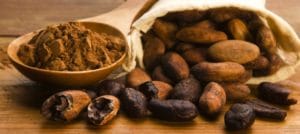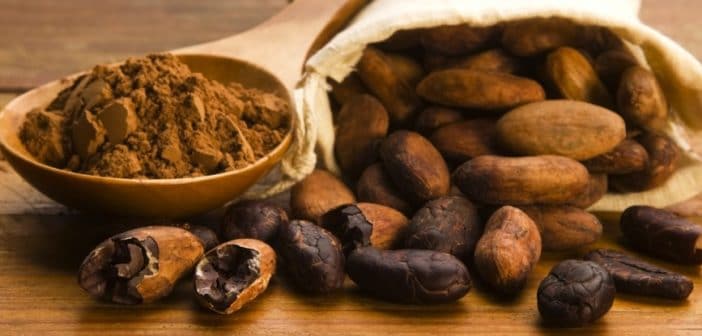 In a burst of sober clarity, Willy Wonka’s trippy paddleboat ride finally makes sense. European party-goers are now chasing a familiar (and completely legal) high that is as powerful as it is ordinary. Cacao, the standard ingredient used in making chocolate and cocoa powder, is now also the key stimulant of many Western European parties. According to a new OZY article, raw cacao is “taking the place of alcohol and illicit substances like Molly and ecstasy” throughout some clubs overseas. What’s unclear, though, is whether partying with cacao is here to stay—or just a temporary fun fix like a sugar rush followed by a crash.
In a burst of sober clarity, Willy Wonka’s trippy paddleboat ride finally makes sense. European party-goers are now chasing a familiar (and completely legal) high that is as powerful as it is ordinary. Cacao, the standard ingredient used in making chocolate and cocoa powder, is now also the key stimulant of many Western European parties. According to a new OZY article, raw cacao is “taking the place of alcohol and illicit substances like Molly and ecstasy” throughout some clubs overseas. What’s unclear, though, is whether partying with cacao is here to stay—or just a temporary fun fix like a sugar rush followed by a crash.
Is It Really A High?
Yes, we’re talking about the very same cacao you can find at your local Whole Foods or Trader Joe’s—often in “nib” form—sandwiched between the coconut sugar and gluten free baking flour. When it comes to using cacao as a party drug, users are pretty creative when it comes to achieving a high. Short of providing a tutorial, apparently you can eat it, drink it or—if you’re braver than me—snort it. (Even if I were looking to get high, it reminds me too much of the time in middle school when I watched Danny Hyde snort a line of Pixy Styx dust on a dare.) So—is it really a high? Like, a high-high? All signs point to…sort of.
According to the OZY piece, cacao offers “a brain-boosting rush and tons of energy, enough to transform its users into raging Energizer bunnies.” Cacao doesn’t take users down some Alice in the Looking Glass rabbit hole, so those looking for a mind-bender will be disappointed. Per the OZY article, Cacao’s effects are “subtle” and simply “enhance” a user’s senses. The duration is, however, eye-opening—literally. A cacao “high” can last for up to nearly six hours and while pure cacao isn’t actually a drug, it does include mood-altering compounds like serotonin. So it’s no surprise that Euro-ravers are huffing cacao for a long-lasting ride.
The same article details how cacao affects the human body: “First comes a surge of endorphins into your bloodstream, which increases acuity and fuels you with feelings of euphoria. Then there’s the flood of magnesium, which relaxes your muscles and de-tenses your body. Raw cacao is also chock-full of [naturally occurring chemicals]that increase blood circulation and stimulate brain power.” In other words: not only does it make you feel good, but apparently it’s good for you, too!
In many ways, it strikes me that cacao’s power comes less in its potency than in what it represents. To me, it’s like Splenda of the club scene—a kinder, gentler substitute for the “real” thing. OZY draws a connection between cacao and the “conscious dance movement” which, next to morning raves on cruise ships, is just about the most eye-rollingly millennial trend ever. “These are parties where virtue handily wins over vice,” the article says, noting that it’s all “G-rated fun.” But to me, there’s nothing G-rated about ripping lines of cacao—even if it’s not pure Colombian cocaine, the goal is still the same: to escape reality and feel something different by using a mind-altering substance.
Sweet, Sweet History
Most people (myself included) confuse “cacao” with “cocoa,” which is a lot like confusing “voda” and “vodka.” (Hint: “voda” means “water” in Russian.) It’s probably also worth mentioning that cacao isn’t sweet—it’s a long road between the cacao bean and a chocolate bar and that delicious road is paved with milk, butter and sugar.
Naturally sugar-free, cacao powder has been used for thousands of years, mainly by Amazonian cultures. The Aztecs apparently thought so highly of cacao that they even used it as money. Additionally, an L.A. Times article pointed out that cacao was one of the earliest items used for making alcohol. “Pottery vessels dating to 1400 BC to 1100 BC indicate that [ancient people]fermented the sweet pulp of the chocolate plant to make an alcoholic drink,” it reads. So the cacao bean was being used for mind-altering methods long before it was used to make anything resembling chocolate.
According to Foodfacts.com, “Edible parts of cacao pods and the beans inside them can be processed to make cocoa powder, cocoa butter or chocolate after being dried and fermented.” Cacao is also quite the superfood, packing a wellness wallop with 40 times more antioxidants than blueberries. It’s also amazingly rich in iron, calcium and magnesium which is why foodies flock to Whole Foods and other fancy nutrition centers to fortify their immune systems with this power-packed little bean.
Another site extols cacao’s many virtues including its supposed role as a natural aphrodisiac. Still, the article also warns that not only is cacao highly addictive, there are several other downsides—including the fact that “long-term consumption of raw cacao may lead to a variety of health conditions such as depression, mood swings, nightmares, and paranoia.” As if that isn’t enough, over time cacao can also build up in the liver as a toxin. (As an alcoholic, I don’t see any upside here.)
A Tasty Trend With A Dark Side
Having found a substance that delivers a non-toxic, hangover-free high, many are jumping on the cacao bandwagon. Chocolatier Dominique Persoone even designed an apparatus that catapults chocolate dust up customers’ noses—at $60 a pop. (You can watch the crazy device in action here.) But even Persoone himself claims it’s not advisable: “You can’t just start sniffing Nesquik,” he warns. Live Science also argues against the practice, claiming that snorting chocolate “can damage the microscopic hairs, or cilia, and membranes of the nose, causing problems with their ability to work correctly, as well as possible scarring.” It probably goes without saying that snorting anything would likely result in this. So—maybe don’t?
In the end, cacao’s true worth may be found in research labs—not in crowded clubs. Many researchers are examining the substance to identify how it can positively affect the brain. Cacao’s roasted cousin, cocoa, has been at the center of several studies including many related to Alzheimer’s research. Findings show that after taking cocao, research subjects “demonstrated greater cognitive function” when it came to “verbal fluency, visual searching and attention.” Tests also showed that the substance improved blood flow to the brain.
But as scientists continue to unlock the role of cocoa in the brain, cacao’s popularity in the club scene will no doubt fade. As club-goers are constantly looking for the next great high that takes them closer and closer to the edge of sanity, chances are cacao’s effects will prove too tame. But if you’re looking for the superpower health benefits of cacao and find the fancy shelves empty, you’ll know it’s because there’s some club kid out there riding a mellow chocolate wave.
Sponsored DISCLAIMER: This is a paid advertisement for California Behavioral Health, LLC, a CA licensed substance abuse treatment provider and not a service provided by The Fix. Calls to this number are answered by CBH, free and without obligation to the consumer. No one who answers the call receives a fee based upon the consumer’s choice to enter treatment. For additional info on other treatment providers and options visit www.samhsa.gov.




